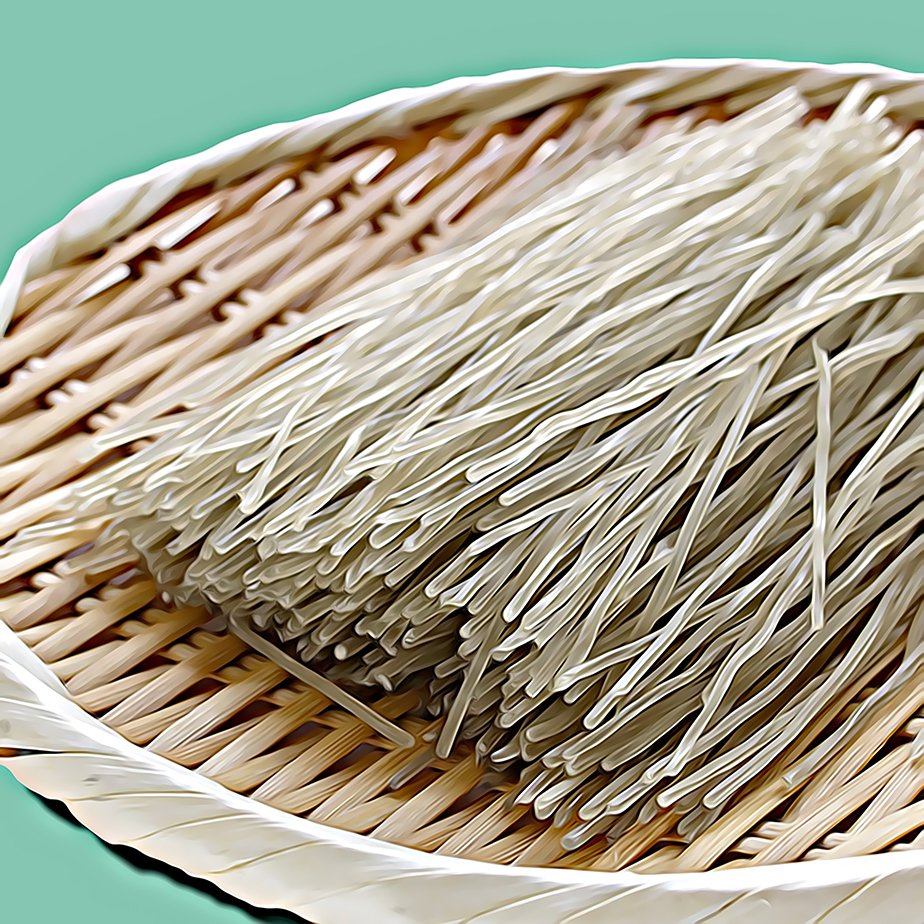Canned chickpeas
Overnight soaking... draining... cooking... sometimes it’s just all too much to prep dried legumes like chickpeas from scratch. For those times, it’s canned chickpeas for the win. Unless you own a pressure cooker, in which case, you’re smart. We don’t so we’re not.
There are few better bacon-saving staples than canned chickpeas – you can rustle up all sorts of things with them. We love adding them to fragrant spiced rice or bulgur pilafs, whipping them into a hummus-y frenzy, turfing them into hearty soups, stews and curries, and tossing them through Mediterranean-inspired salads. The good news is they’re pretty much as healthy for you as the dried ones; just buy ones that are low in sodium as a fair bit of salt can get added during processing. Canned chickpeas arguably don’t taste QUITE as great as cooked-from-scratch-dried ones, but that’s a minor quibble. (Note that a drained 400g can of chickpeas is the equivalent of about 100g dried chickpeas, if you need to convert a recipe).
Chickpeas are the seedpods of a feathery-leafed plant that grows to about 50 cm high. They’ve been around for a very long time; they’re one of the oldest crops, with evidence of cultivation dating back more than 7000 years. Chickpea flour, also called besan or gram flour, is a staple ingredient in many places, including Myanmar, India, North Africa and Southern Europe. And hmmm… besan. We feel another Pantry Dive coming on.
There are two main types; one is the smaller desi, preferred on the Subcontinent where it’s called Bengal gram. It’s also used in Ethiopia, Mexico and Iran. Desi can be green, speckled or black, and if you’ve ever seen kala chana (‘black chickpeas’) in Indian stores, it’s this one. (Confusingly, there is also a black chickpea called cici neri, grown in Southern Italy and this is NOT that one). It’s desi that are used to make besan. The second type is the larger Kabuli, preferred by just about everyone else. Markedly harder to grow, kabuli have a tan, smooth surface and are what you get in a can. With their smooth, buttery texture and slightly nutty flavour, they’re the type used to make falafel and hummus, arguably the world’s two most famous chickpea dishes.
You probs already know that the liquid from canned chickpeas is pretty useful in its own right. Functioning as an egg white substitute in vegan baking and mayo, it works as an emulsifier and foaming agent and is called “aquafaba”, which is Latin for “bean water”. We have used it but we’re not vegan so our preference is for egg whites.
Chickpeas with kale and pancetta
Sauté 125 g chopped pancetta, 3 crushed garlic cloves and 5 chopped anchovies in 100 ml olive oil for 4 minutes. Add 1 drained can of chickpeas, a small handful of raisins and 1 chopped bunch kale. Cover then cook, stirring often, for 15 minutes or until kale is tender. Drizzle with good red wine vinegar to taste, season and serve.
Paprika fried chickpeas
Pat a can of drained chickpeas dry using paper towel. Heat 2.5 cm of olive oil in a frying pan over medium-high heat, add the chickpeas and cook, shaking the pan often, for about 6 minutes or until golden. Remove to a bowl using a slotted spoon, draining well, then scatter over smoked paprika and sea salt flakes to taste. Serve hot or warm.
Chickpea and avo smash
Coarsely mash 1 drained can of chickpeas in a bowl. Add the flesh of a ripe avocado, then coarsely mash together Using a fork, mix in ¼ cup basil pesto, a large pinch of dried chilli flakes and 2 tbsp lemon juice. Season to taste, then pile onto toasted sourdough.






